Natural Healing Modalities for Pups and Kittens
Natural healing modalities assist our animals to regain health by stimulating the body's natural self healing forces.
The world of veterinary medicine is changing. People are realizing that if
alternative medicine is better for them, it's better for their pets, too.
Dogs are visiting acupuncturists, chiropractic doctors, and homeopaths.
Still, many dog owners are unaware that such simple measures as changing
their pet's diet and using vitamins, herbs, and other natural cures can
help prevent or heal ailments ranging from excessive scratching to depression to a host of serious diseases.
"Wild animals do not rely on the pharmaceutical industry to cure their ills.
They have had to find ways of thriving without artificial input. Because of this, they make
fantastic models of a healthy natural lifestyle."Cindy Engel, DVM
Simple Step to Protect Puppies and Kittens
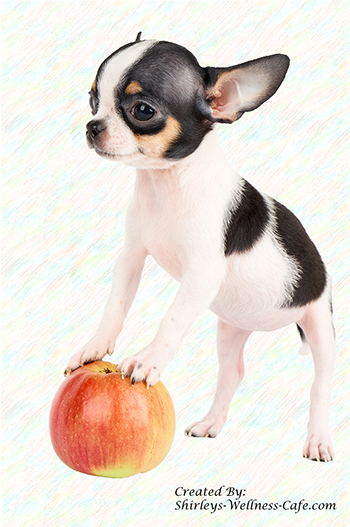 Puppies and kittens are constantly exposed to environments and substances that can compromise their health.
Pesticides can be difficult to avoid as neighbors and farmers spray their
yards and fields. Our furry companions are exposed to viruses, bacteria and parasites
in vet offices, training buildings, dog parks and even open parks and fields.
Puppies and kittens are constantly exposed to environments and substances that can compromise their health.
Pesticides can be difficult to avoid as neighbors and farmers spray their
yards and fields. Our furry companions are exposed to viruses, bacteria and parasites
in vet offices, training buildings, dog parks and even open parks and fields.
Holistic veterinarians use a unique natural immune support supplement that balance and optimize the animals immune system.
"A four month old kitten had a severe skin condition
that was diagnosed as ringworm. After four months of conventional therapy,
the resistant ringworm infection was not resolved. We put the kitten on
a special immune modulating product
and within 5 days there were no apparent ringworm lesions
remaining. Within a few weeks all the hair had grown back - and the now
9 month old cat has a beautiful, glossy coat. The ringworm lesions have
not returned."
"A little over 2 years ago I bought a 4 year old Cocker Spaniel, she has
had only 1 live puppy out of 3 litters. After taking one of the puppies
to the vet for an autopsy we found out her puppies were born with pneumonia,
loaded with e-coli and staph (mom's uterus was infected). Her puppies would
be born alive and normal weight but start to die over the first 48 hours. To back up a bit...
we put her on clavamox from the vet for 10 days after
the 2nd litter. She then had her 3rd litter, which is when we did the autopsy,
and put her on clavamox for 2 weeks.
On this last heat cycle we tried it
again, my vet said she was such a nice Cocker she didn't see any reasoning
to spay her and discontinue trying to breed her (this was our last attempt
at breeding her, if no healthy babies we were going to spay her). Two weeks
before her delivery date we put her on this immune support product, we will keep her
on it until the puppies are 2 weeks of age. She has 3 strong
and healthy babies, all are doing well. Momma is healthier than ever and
also doing very well. I am just thrilled! "

Healthy Diet for Puppies and Kittens
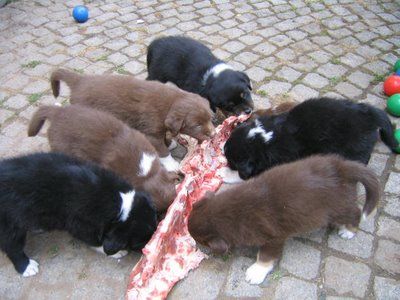 By understanding what carnivores eat in the wild, you will learn valuable clues as to what you should be feeding
your domestic pup and kitten. You will find out exactly what the digestive system of a
domesticated carnivore is programed to eat by centuries of evolution. By looking at young wolves
and young cubs growing up we are actually observing their ancestors. If we couple
that with modern scientific discoveries about diet, health and aging, we are
able to produce a realistic, health promoting, evolutionary diet.
By understanding what carnivores eat in the wild, you will learn valuable clues as to what you should be feeding
your domestic pup and kitten. You will find out exactly what the digestive system of a
domesticated carnivore is programed to eat by centuries of evolution. By looking at young wolves
and young cubs growing up we are actually observing their ancestors. If we couple
that with modern scientific discoveries about diet, health and aging, we are
able to produce a realistic, health promoting, evolutionary diet.
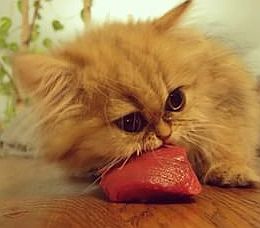 Diet is extremely important in the growing months of a dog's life. There
are many processed food products designed especially for puppies which offer
a convenient method of feeding. But as with all dogs and cats, regardless of breed or
age, puppies and kittens benefit from variety in their diet. Holistic veterinarians strongly recommend
feeding fresh, mainly raw food diet to your puppy and kitten because the best nutrition maintains
the best health, especially over the long-term.
Diet is extremely important in the growing months of a dog's life. There
are many processed food products designed especially for puppies which offer
a convenient method of feeding. But as with all dogs and cats, regardless of breed or
age, puppies and kittens benefit from variety in their diet. Holistic veterinarians strongly recommend
feeding fresh, mainly raw food diet to your puppy and kitten because the best nutrition maintains
the best health, especially over the long-term.
Raw Feeding
When feeding vegetables, process or grate the vegetable, this is necessary to assist
the pup ( or dog) to break down the cellulose. Cooking also breaks down
the cellulose but destroys some of the nutrients, hence the benefits of feeding
raw foods. Obviously foods such as oats, grains, and pulses will need cooking.
Raw meat may be minced or cut into small pieces for small pups, though bigger
pups will tear up a bigger piece of meat.
Pups will also eat small pieces of raw meaty bone such as chicken wings or
frames. We start to offer chicken wings from approx. 6 weeks of age. Obviously
this varies from pup to pup. A very small piece of chicken wing should be offered
at first, to assess how well your pup will cope. Chicken is good for starters
because it is soft, easily chewed and digested. To assist a very small pup,
the wing can be placed on a chopping board, given a good smack with a mallet
to break up the bone – of course one does this before handing the wing to the
pup ! This action is also reassuring for the owner, who has visions of their
pup choking with a whole bone stuck in its throat. Rest assured, they won’t!
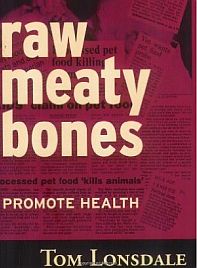 We give 4 small meals daily till 10 to 12 weeks, then reduce to 3 meals with
a biscuit snack for supper . We give mid morning and afternoon snacks sometimes
but not every day. By watching for the growth spurts which are generally preceded
by increased appetite, its easy to increase their food as they need it, then
ease back a little as the rapid growth phase slows up again.
We give 4 small meals daily till 10 to 12 weeks, then reduce to 3 meals with
a biscuit snack for supper . We give mid morning and afternoon snacks sometimes
but not every day. By watching for the growth spurts which are generally preceded
by increased appetite, its easy to increase their food as they need it, then
ease back a little as the rapid growth phase slows up again.
At six to seven months we reduce to two meals a day. The pups still have
a lot of growing to do over the next few months, because they grow more slowly
than kibble fed puppies, so they still need reasonable amounts of good food.
Each pup is different and each pups needs can vary from day to day, just
as your own needs vary. So if the pup still seems to be hungry after a meal,
listen to him. You can give him extra right away or give a small snack later.
However, be wise to the greedy pup who will eat till he bursts if you let him !
If you prefer to feed mostly dry or canned food for convenience and cannot
be persuaded to change, it’s a simple matter to top it off with a spoonful of
cottage cheese, yogurt, or substitute some of the canned food with a serving
of some of the meat and vegetables that you are eating yourself. Your pup will
certainly appreciate the change !

Are You Meeting Your Pup and Kitten's Nutritional Needs?
 According to Donald R. Collins DVM author of The Collins Guide to Dog Nutrition,
dogs will eat anything they can get their paws on if they are lacking in
the nutrition to supply them with adequate energy. Dr. Collins states in
his writing, "If there are insufficient amounts of nutrients in the food to
furnish all of the calories a dog needs, then the dog will not gain weight and
will remain hungry all of the time.
According to Donald R. Collins DVM author of The Collins Guide to Dog Nutrition,
dogs will eat anything they can get their paws on if they are lacking in
the nutrition to supply them with adequate energy. Dr. Collins states in
his writing, "If there are insufficient amounts of nutrients in the food to
furnish all of the calories a dog needs, then the dog will not gain weight and
will remain hungry all of the time.
It will eat almost anything, including dead
animals, feces, carrion or garbage to fill the hollow feeling within its belly."
To help ensure a wholesome diet with the appropriate nutrients avoid diets that
are made of inferior ingredients or is made using high heat for processing and
choose a diet for your friend that is comprised of human quality whole food
ingredients.

5 Steps Solutions for a chewing puppy
Dr. Andrew Jones, DVM
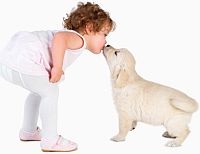 SPICE UP THEIR LIFE. One of the reasons dogs chew is boredom. Regular
vigorous exercise will burn off emotional energy. A tired, exercised pet
is less likely to chew.
SPICE UP THEIR LIFE. One of the reasons dogs chew is boredom. Regular
vigorous exercise will burn off emotional energy. A tired, exercised pet
is less likely to chew.
THE RIGHT THINGS TO CHEW. Provide several chewable toys, and rotate them
weekly. One of my favorites is a Kong toy, filled with peanut butter and
frozen. This keeps my dog entertained for hours.
MAKE THE BAD BITTER. Bitter Apple is a safe, non-toxic repellent spray.
Place it on your couch or shoes. Tabasco sauce is another effective repellent,
as some pets will even lick bitter apple.
EASE THEIR ANXIETY. Anxious pets can be chewing pets. Bach Rescue remedy,
can be used to decrease anxiety and calm your pet. Try it before you leave.
Valerian, a sedative herb, can be given as a tincture of 1 drop per lb of
body weight twice daily. A flower remedy using the plant Clemastis has also
helped some pets. Place 10 drops of the flower remedy in your pet's water
twice daily.
CRATE TRAIN. If the chewing can't be controlled then confine your pet.
Dogs often feel more secure in a small, more confined space. Begin by only
leaving your pet for a short time, no more than 1 hour, gradually increasing
the time away. The maximum time should be 4 hours.
Puppy Parenting Issues From 8 weeks to 4 months
Richard Wm. Bernhard, a Board Certified Master Trainer
 Owner training classes should start immediately, before you become frustrated
of not knowing how to solve his housebreaking, chewing and nipping problems.
Classes should start almost immediately after having had acquired your new
puppy to get both you and your puppy started on the right path. Experience
has taught us by working one on one with each pet owner, how little the
owner knows about pet training and what he needs to know about understanding
how the dog's mind works. We are also aware of how much time it takes to
privately teach, counsel and thoroughly "re-train" each owner.
Owner training classes should start immediately, before you become frustrated
of not knowing how to solve his housebreaking, chewing and nipping problems.
Classes should start almost immediately after having had acquired your new
puppy to get both you and your puppy started on the right path. Experience
has taught us by working one on one with each pet owner, how little the
owner knows about pet training and what he needs to know about understanding
how the dog's mind works. We are also aware of how much time it takes to
privately teach, counsel and thoroughly "re-train" each owner.
Mr. Bernhard's knowledge of animal behavior is an excellent source of
education for young people and adults alike. He Teach "People" How
to Train and Parent their "Companion Dogs" I choose to link to Mr. Bernhard's
site because he is also an advocate of holistic animal health care.

Overcoming Disaster in Von Shrado Great Danes' Kennel
by Sandy Hann
In March of 1992, I had a litter born prematurely and lost all but one
puppy. She was a very lightly marked Harle puppy. A few days later my Ch
Honey had to have a C-section to deliver two fawn boys. Two days later,
my Ch Butterscotch, {Fridge's Sister} had to have a C-Section to deliver
one fawn girl. She also had to have a breast removed at the same time. Her
puppy was so tiny and weak, it couldn't nurse so I began hand raising her.
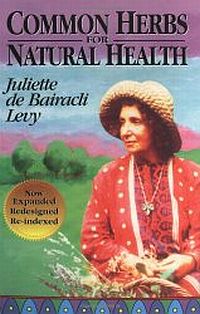 The mother of the Harle was being very rough with her puppy so I decided
to see if Honey would raise her, she was being such a wonderful mom to her
two boys. She accepted her immediately. Then I tried putting the fawn girl,
at 6 days of age, on her and she accepted her as well. Now remember this
fawn girl had never had any colostrum from the mothers milk. I had another
litter of 3 whelped a couple of weeks later.
The mother of the Harle was being very rough with her puppy so I decided
to see if Honey would raise her, she was being such a wonderful mom to her
two boys. She accepted her immediately. Then I tried putting the fawn girl,
at 6 days of age, on her and she accepted her as well. Now remember this
fawn girl had never had any colostrum from the mothers milk. I had another
litter of 3 whelped a couple of weeks later.
I had a total of 7 puppies from 4 litters. This was the problem I had
been having with my bitches. Very small litters and C-sections frequently.
A couple of days shy of 6 weeks, the first born puppy got sick, vomiting
and diahrrea. It smelled like Parvo to me but my vet said it couldn't be,
she was too young. We lost her. Honey's two males got sick. He was able
to save them but still didn't know what it was. When the first puppy from
the last litter got sick and died within a few hours an autopsy showed she
did indeed have Parvo and she was under 6 weeks of age. I couldn't understand
this as I had boostered all the bitches prior to breeding. To make a long
story short, the only puppy that did not get Parvo was the little fawn girl
who never had any of the mothers colostrum. It really started me thinking.
One of Honey's males got HOD and treatment was not effective and we finally
had to have him put down. The other bloated at less than a year of age but
did survive. The fawn girl has been very healthy.
In the past 4 years, I feel I have made a lot of progress with my dogs
health. One in particular, Ginny. Her first litter, she whelped one live
puppy, one dead and then a C-section to remove 2 dead puppies. After a lot of
veterinary homeopathy treatments, her second
litter was a litter of 7 whelped normally and her last litter, a litter
of 4 sired by Fridge whelped normally. I had bred her 2 other times to Fridge
when he was alive but she did not conceive.
My Ch Betty is another. She just whelped a litter of 8 live puppies in
April. Her previous litter was another litter of 8 but 4 were born dead.
Before that she had a litter of 2. She received extensive homeopathy
treatment in between the last 2 litters and absolutely no vaccines.
She had had a Rabies Vaccine a month before being bred with the litter with
4 dead puppies in it. You can continue to
read the success stories that Jim and Sandy Hann have experienced with
homeopathy for their champion dogs and for themselves.


"I start the weaning in the fourth week (Juliette is very firm on not
starting earlier). This begins with using goat's milk (raw, unpasturized,
if you can find it) as a base. Thicken this by adding about 1 tablespoon
of raw honey per quart of goat's milk. Then for extra nutrition, strengthen
the milk by adding approximately 1 teaspoon of NR Tree Bark Gruel per puppy
to be fed. This mixture is warmed to a tepid degree (lukewarm not hot) and
introduced to the litter.""...Towards the end of the fifth week, I start
to introduce raw meat (I use very fine lean ground turkey) as a separate
meal. A little bran (oat or wheat) should be added to the meat for roughage.
What we are trying to accomplish here is to imitate nature as closely as
possible."
"The food your animal eats should provide all of the nutritional components
which are necessary for all organs and systems of a healthy body to perform
in harmonious unison. A properly functioning body does an amazing job at
preventing disease and healing itself, and to do this it requires the energies
and nutrients of a well-balanced diet. In terms of finding the proper diet
for our companions, this means learning to look beyond our own needs, opinions,
and agendas to address the natural needs of the animals that we care take.
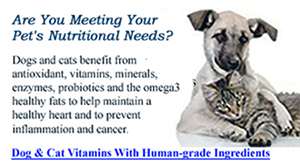 The business of selling pet food at times seems to be focused more on what
appeals to animal guardians than on the dietary needs of pets. The market
success of most commercial foods is judged by how convenient it is, and
how good it looks, smells, feels, or even tastes to pet owners. The natural
reality is this: what is good for our animals may be appalling to us, but
if we really wish to provide them with the nutrition they truly need, we
must learn to look beyond standards of human acceptance to consider what
our pets might eat if we weren't around. Dogs for instance, wouldn't be
eating sirloin-like chunks of meat with a rich gravy , or seafood buffet
from a can--- they would be eating berries, grasses, rodents, and the rotting
flesh of dead animals. This of course, doesn't appeal to us, so most dogs
and cats eat dried kibbles or sterilized canned foods which lack live enzymes
and dozens of other important nutrients that were destroyed by cooking.
" Mary L. Wulff-Tilford
The business of selling pet food at times seems to be focused more on what
appeals to animal guardians than on the dietary needs of pets. The market
success of most commercial foods is judged by how convenient it is, and
how good it looks, smells, feels, or even tastes to pet owners. The natural
reality is this: what is good for our animals may be appalling to us, but
if we really wish to provide them with the nutrition they truly need, we
must learn to look beyond standards of human acceptance to consider what
our pets might eat if we weren't around. Dogs for instance, wouldn't be
eating sirloin-like chunks of meat with a rich gravy , or seafood buffet
from a can--- they would be eating berries, grasses, rodents, and the rotting
flesh of dead animals. This of course, doesn't appeal to us, so most dogs
and cats eat dried kibbles or sterilized canned foods which lack live enzymes
and dozens of other important nutrients that were destroyed by cooking.
" Mary L. Wulff-Tilford
Dogs do not have the digestive system to cope with grains. Grains are
one of the biggest sources of allergies in dogs. Grains make up the majority
of dog food company food sources. Many people find when they switch to an
all natural diet, the allergies their dogs had disappear. This is common.
Not only is BARF cheaper to feed than commercial dog foods, but there
are enormous savings to be made by not having all those vet visits to fix
your dogs' allergies. Are you asking yourself yet, "why hasn't my vet recommended
this?" Yes, I would ask that of them too. Unfortunately most vets receive
NO education at university on dog diet other than what the commercial dog
food company reps tell them! (yes, this is the education they PAY to get
- unbelievable. Luckily, some universities are realizing this mistake and
are making amends).

Home Made Raw food Diet for Animals
Your dog’s behavior, happiness, health, longevity and overall well-being
are inextricably intertwined with what you feed him. Dogs, just like everyone
else, have specific nutritional needs. And, not to complicate matters, the
needs of individual dogs vary. "I've seen amazing results and health improvement
in my dog Shasta, simply by switching her diet
from kibble/canned food to raw food. The raw food diet strengthened her
immune system dramatically. She no longer suffers from allergies to fleas
and at 11 years of age her health and vitality are radiant." - Shirley
Oral Disease in Cats and Dogs
"Puppies and kittens cut their deciduous teeth between 2 and 6 weeks
of age.An inevitable consequence of this is gingivitis. A diet of processed
food ensures lack of gum massage and the gingivitis persists. The growing
animal develops grooming behavior and adds hair and fecal materials to
the accumulated food scraps clogging the inter-dental spaces." "...give our
cats and dogs their basic rights of a healthy functioning mouth. Supply
raw chicken wings, chicken necks or oxtail to young/small kittens and puppies
when they most want to chew and explore."
Raw bones are NOT harmful to carnivores. Only cooked bones can
splinter and can pose a threat. Chewing on raw bones helps to strengthen
the jaw bones, massage the gums while stimulating the salivary and digestive
glands, help reduce plaques and calculus accumulation on the tooth surfaces,
clean teeth and reduce occurrence of gingivitis. Bones are a good source
of calcium and other important minerals.